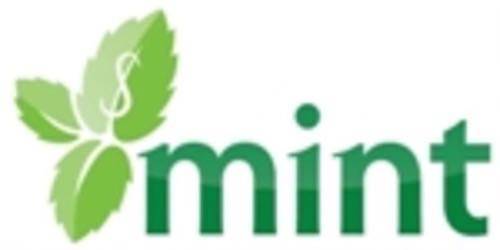There was a time when managing finances from your computer meant you had to use desktop software. Today, that’s no longer the case. There are now a number of applications that let you do your banking in the cloud, a trend we’ve dubbed “banking 2.0.”

These sites aren’t just simplified versions of our former desktop apps, either. Instead, they offer a number of features that take advantage of their “always on” status. Forget downloading updates and typing in your transactions line-by-line, these new banking 2.0 sites can offer you better insight into your financial situation with no additional effort on your part beyond just logging in.
We recently reviewed the state of online accounting, an area that also may be of interest to you if you’re following the banking 2.0 trend. Since then, both the DEMO and TechCrunch50 conferences have come and gone, and at both events new competitors have now joined the online banking landscape. Here, we will look at the new companies that recently debuted as well as our old favorites.
Mint
Mint.com may be the most popular of the online banking apps today…or perhaps it’s just the most hyped. The site currently claims to serve nearly 400,000 users, manages over $12 billion in transactions, and has saved $100 million+ for its users. On Mint.com, you can manage your bank account, credit card accounts, loans, brokerage and investment accounts, and more. The site also provides guides that can help you make big financial decisions like buying a new car or home. The feature which makes Mint unique is their ability to scan through your bank account and credit card transactions in order to help you find savings. They do this by matching you up with offers for new credit cards with lower rates or by negotiating a lower rate with your current company.

Wesabe
Wesabe takes what’s normally a private activity – financial management – and makes it social. Like other online banking apps, Wesabe lets you see all your bank accounts and credit cards in one place. You can categorize your transactions and see spending and earning summaries. Where Wesabe is different is that it takes your data, anonymizes it, and shares it with the Wesabe community. That aggregate data is then analyzed for patterns and those results are shared with everyone. For example, Wesabe can show the cost of an average transaction at a particular merchant.

Geezeo
Geezeo is very much like Mint.com in that it offers a centralized site to access all your financial accounts including banking, credit cards, loans, etc. Where they are a bit different is in their community aspect. Instead of anonymized data, they offer community-focused areas like Groups and Goals where you can socialize and learn from others who have the same financial concerns that you do. Geezeo also stands out for letting you upload your own bank account data, if you so desire, instead of having to set up accounts to upload into Geezeo automatically. Transactions can also be manually entered. Geezeo offers a mobile app too, that lets you check your balances and available credit from your mobile phone.

Expensr
Expensr is an online personal finance application which was recently acquired by recommendation engine Strands. The site is now being integrated with Strands’ recommendation technology to produce a new product, moneyStrands, which analyzes your financial history in order to recommend products and services you may find appealing. The site lets you import your bank account files into their system using a secure uploader. The app will then auto-categorize your transactions. You’re presented with a variety of pie graphs and bar graphs that break down your spending to show you where your money is going. You can compare yourself to your peers by tagging yourself with keywords like “young professional” or “college student” and then look at your spending habits versus the average from that particular group. Expensr also offers budgeting tools which can help you plan for the future.

moneyStrands
After acquiring Expensr, Strands has been working to combine its technology with their own recommendation engine. The end result is moneyStrands, still in private beta. Ultimately, the site will offer you a way to aggregate your financial information in one place and see instant snapshots of your finances. Recommendation technologies will present you with services you may be interested in and you can anonymously compare your habits with others. At the moment, Expensr and moneyStrands appear as separate web sites, but perhaps they will become more integrated in the future.

Xero
Where Mint.com may appeal to former Quicken users, Xero.com appeals to former Quickbooks users. This kiwi startup offers daily bank reconciliation as well as invoicing, reporting, A/R, A/P, expense claims, and other bookkeeping tasks. For those considering the switch, a handy page on the Xero web site lets you show your accountant exactly what Xero can and cannot do so that you can analyze whether or not their service is right for you.

Rudder
Rudder made their official debut at the recent DEMO conference in San Diego. Unlike the other apps reviewed here, Rudder focuses on bills more than banking. With Rudder, you can determine how much money you have available to spend while still paying all your bills. The app aggregates your banking and credit card accounts, but the focus here is not on what’s taken place in the past (historical trends, spending habits, etc.). Instead, Rudder focuses on the future by letting you know what’s left in your account for spending and saving. The best feature about Rudder, though, is that it doesn’t force you to log into their site to get this information. The app delivers balances, transactions, and upcoming bills directly to your email inbox.

Green Sherpa
Another app which debuted at DEMO was Green Sherpa. At first glance, the app appears to be very much like its competitors with bank account aggregation, reconciliation, and budgeting tools. However, Green Sherpa offers a combination of features which appeal to those who are making the transition from desktop apps. The app lets you input transactions manually and offers a more advanced cash flow projection than Mint.com does. However, the app’s most unique feature is its sharing aspect. You can choose to give other people (like a family member or accountant) access to your data. While that makes Green Sherpa stand out, they’ve entered a crowded space where competitors already have solid leads, so it may not be enough to win people over.

Buxfer
Buxfer is another app offering a home to all your accounts. It will auto-download your data, categorize your transactions, and help you budget. Buxfer addresses the privacy concerns that many have with banking 2.0 sites by integrating with Google Gears. The app uses Google Gears to store your account login information on your own computer, only syncing back the data collected, not your private credentials. They also offer a groups feature which will appeal those sharing expenses with others, like roommates, for example. You can use Buxfer to track and settle IOUs with others through the site. This makes the app more appealing to a younger crowd, as does its mobile integration. You can access Buxfer via SMS, Twitter, email, on on the mobile web.

Shryk
Shryk is a company which just launched at the TechCrunch50 conference. Their two-pronged approach is designed to help kids achieve financial literacy. The first part of that approach is a service called iThryv which teaches kids about earning, saving, and managing money. This product is sold through banks and credit unions and is also available free to educational institutions. The second part of the Shyrnk platform is WeProsper.org. This is an online community where teachers, schools, and financial institutions can come together and develop new tools and methods to promote financial literacy.

Security Concerns?
For obvious reasons, some people will find the thought of banking in the cloud frightening. This is, after all, data that requires a high level of security. However, with banks themselves offering online services and bill pay, people are beginning to see that “online” doesn’t necessarily mean “insecure.” In fact, having your banking data stored on servers run by a business may actually be more secure than having a Quicken file saved on your laptop, a device which could be easily lost or stolen. Also, because home users don’t tend to back up their data as often as they should, a hard drive crash could mean a complete loss.
Challenges
Although there are a number of sites to choose from in this competitive space, there are still some challenges to overcome. For one, because almost all these companies are U.S.-based, the banks they support are U.S.-based as well. This leaves potential international customers without a way to participate. Some of the companies state in their F.A.Q.’s that they plan to add support for more banks worldwide in the future, but that’s only likely to occur if the company can first gain a foothold here in the U.S.
Another issue with these sites is that there is almost no support for small community banks and credit unions. Unless the site allows you to import your transactions manually (which somewhat defeats the purpose), you’re out of luck. Why is that almost all major banks are available yet so few of the smaller banks are? This is the type of service that could help keep smaller banks more competitive with their big bank counterparts, so you would think some of them would be interested. Is the burden on the banking 2.0 sites to help smaller banks get online or is it up to those institutions themselves? Perhaps the banking 2.0 sites need to be working a way to automate the import of transactions from any bank, regardless of whether or not the institution itself supports the site. The first company to come up with a solution like that could really set themselves apart from the rest of the pack and gain a whole new set of customers in the process.
Conclusion
Banking 2.0 is still very much an emerging technology trend. Yet with the young generation of digital natives now entering the workforce and starting their careers, you can be sure that they will have an impact on this space. They will expect their banks to support not only online banking but also other online money management tools such as these. This is not a generation that’s known for their brand loyalty, so you can bet that they will be all too happy to change banks if they decide they want to use one of these services and their bank isn’t supported.
Banking 2.0 represents only one aspect of the growing trend that is cloud computing. Just as other desktop software is being threatened by new online apps, desktop financial management software is threatened as well. These banking sites go up against expensive and unwieldy desktop software while offering their services for free and finding you savings. In our current economy, that activity gives banking 2.0 the potential to go mainstream fast.
Image credit: Cash, courtesy of: spcbrass










